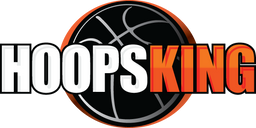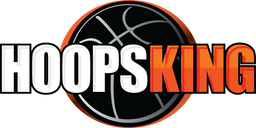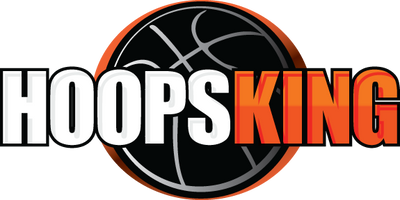Basketball is a very simple game that almost anyone can learn, understand, and enjoy. The beauty of the game comes from the complexity and nuance that is learned through first understanding the basics of the sport. In order to understand the game you first must know the rules. Those can be broken down into three main sections: the basics, fouls, and violations.
Basic Basketball Rules
Basketball is a team sport played with five players per team. The goal of the game is to score more points than your opponent in a given amount of time. To score points a team must try to put a ball into a hoop that is 10 feet above the ground.
The game is played, either indoors or outdoors, on a rectangular surface called a court. The ball is moved down the court towards the basket by the offense. The team with the ball is called offense and the team without the ball is called defense. The offense uses dribbling and passing in order to move the ball into a position where a player can easily score. The defense tries to contest the dribbles, passes, and shots in order to make it more difficult for the offense to score points.
There are three point values. Any shot made inside the 3-point line is worth two points. A shot made outside the 3-point line is worth three points. If a foul is committed by the defense, the offense is awarded a chance to shoot free-throws which are worth one point.
Each game is divided into halves and depending on the level, also quarters. High school games are played with eight minute quarters while professional players play with 12 minute quarters. College games are played with only two twenty minute halves. Each team is assigned a basket to defend which means that the other basket is the goal they are trying to score in. The teams switch baskets after halftime. The game is started with one player on each team at mid-court. The official will toss the ball into the air and each player will try and tip the ball to one of their teammates. This is called the “tip-off.” If a team scores than the opposing team must take the ball out of bounds under the hoop and pass it in to one of their teammates.
In summation, the basic principle is to simply put the ball in the hoop more times than your opponent. However, there are some basic rules that must be followed in order to prevent basketball from looking like a rugby match.
Basketball Foul Rules
Fouls are called when a player commits an illegal act against the opponent. There are four types of fouls: personal, intentional, flagrant, and technical.
Personal fouls include hitting, pushing, holding, slapping, or any combination of the latter. If a player is shooting when a personal foul occurs than he/she is awarded free-throws. If the shot is made then they get credit for where the shot was taken (worth two or three) plus one free-throw, this is known as an and-one. If the player misses the shot then they are awarded either two or three free-throws based on where the shot was taken from. If the player was not shooting then the ball is simply take out of bounds. Each player is allowed five personal fouls, six for professionals, before they are disqualified from the game. Each team is only allowed five personal fouls per half before every personal foul results in free-throws for the opponent, regardless if it was a shooting foul or not.
A flagrant foul is any foul that is especially violent. This is mostly called when there is contact to the head or excessive shoving.
An intentional foul occurs when there a player creates excessive contact when there was no attempt to go for a steal or block.
A technical foul does not involve physical contact but rather how you treat an opponent or official. Taunting or excessive vulgar language are the most common forms of technical fouls.
The penalty for a flagrant, intentional, and technical foul is two free throws for the opponent and the opponent gets to keep possession of the ball after the free throws are taken. Players also run the risk of ejection when committing those types of fouls.
Basketball Violations
Violations carry less severe consequences compared to fouls and are the basic governing rules for how the game should be played.
The two most basic violations are traveling and double dribble. When a player has the ball he/she can only move with it while dribble it with one hand. Moving your feet while not dribble the ball is called a travel and the ball is awarded to the opponent. When a player picks up their dribble, or dribbles with two hands, they must stop moving and establish a pivot foot. A pivot foot is a foot that must remain stationary while the other foot may move. If the player picks up the dribble and dribbles again it is called a double dribble and the ball is awarded to the other team.
While dribbling a players hand must stay above or two the side of the ball. If the hand drops beneath the ball while dribbling it is called palming/carrying and the ball is awarded to the opponent.
When a ball is shot the other team is allowed to attempt to block the shot until the ball is starting its downward trajectory. If a player blocks a ball that is starting down it is called goal tending and the basket is counted for the offense.
There are three main time restrictions in basketball. When a player is in-bounding the ball, after a basket, foul, or violation, that player only has five seconds to pass to a teammate or the opponent gets the ball back. If the ball is in-bounded behind the mid-court line then that team has 10 seconds to get across the line or it is a violation and the opponent gets the ball back. Also, once a team crosses the mid-court line they cannot go back across it until the next possession. If they do it is called a back-court violation. The final time restriction is called a shot clock violation. Each team is only allowed a certain amount of time, 24 seconds for professionals and 30 second for college, to shoot the ball. If they do not get a shot off that results in the ball hitting the rim then the ball is turned over to the opponent.
Basketball is simple. Put the ball in the hoop, do not walk with the ball, and do not be overly physical with your opponent. There is obviously much to learn if you want to be good at the sport both with the skills and knowledge needed. If you are looking for ways to improve then research drills to practice shooting, dribbling, passing, defense, rebounding, and footwork. In order to increase your knowledge of the game watch it on TV or research strategies that the top coaches use in order to win games. Buy a basketball. Find a court with a hoop. Round up your friends and go play!


